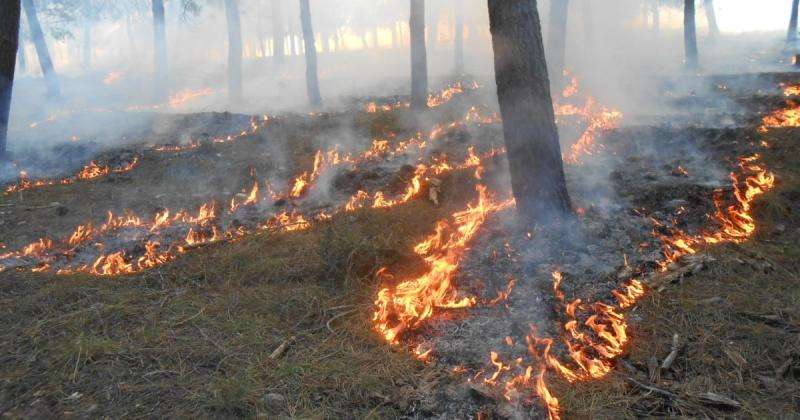Managing bushfires for safety and biodiversity

People have long used planned fires as a tool to open up access to hunting grounds, to encourage new plant growth, and to cultivate plants for cooking, heating and spiritual purposes.
The idea of using fires as a tool is increasingly being used in the form of controlled burning in which vegetation and undergrowth is burned to reduce the risk and severity of bushfires near populated areas.
But what is easily forgotten is that bushfires are natural phenomena that create unique habitats that are essential for different plants and animals to thrive in. It makes for an increasingly tricky problem, not least because climate change will increase the frequency and severity of fires. How do we balance people's safety while protecting and encouraging biodiversity in fire prone areas?
And how do we balance the needs of those species that rely on fires to create unique habitats and those whose habitats are at risk of being lost to fire?
Researchers at the ARC Centre of Excellence for Environmental Decisions at the University of Melbourne are now using their extensive knowledge of "pyrodiversity" - the science of how different fires influence habitats - in projects to predict how fire and forest management influence wildlife across the world. It involves modelling the responses of different species to different fires to determine the best "mix" of fire histories to support all the different species in a given fire prone area.
"What's new and exciting in fire and biodiversity research is that we are starting to learn enough about how plants and animals respond to fire to inform on-ground decision making," says Dr Luke Kelly, the project research leader and an ecologist at the University of Melbourne.
"We can help managers decide when and where to burn, or when to light or suppress fires, to meet the needs of different species that people care about."
The key to protecting and encouraging the diversity of flora and fauna is to ensure the appropriate mix of fire types in terms of their frequency, severity and size, he says. It means that certain patches of land will require smaller, or less frequent fires while others might even need larger or more frequent fires.
"Now, more than ever, an understanding of animal and plant responses to fire should be used to determine fire management objectives and actions," Dr Kelly says. "That is, context matters and fire regimes need to be tailored to suit particular species and ecosystems."
These new tools and approaches are already being used across large parts of Victoria – one of the world's most dangerous bushfire zones – including Murray Sunset National Park in the State's far northwest.
Dr Kelly says the fire balancing-act is being further complicated by climate change and rising temperatures that are changing ecosystems and habitats.
Climate complication
For example, writing in the latest issue of Science magazine, Dr Kelly and co-researcher Dr Lluis Broton of the Forest Sciences Centre of Catalonia write that managers need to understand and account for the life history of different plants when planning the frequency of planned burning. They note that while some plants may have only a short time frame between their maturity to when they start to die, others have much longer time frames. A hotter, drier climate is changing the range of fire intervals that allow plants to persist.
They also point out that while for some species fire is important in promoting diversity, for others it is a threat. A recent major study of conifer forests in the Yosemite National Park in California found that the different forest habitats created by different fire patterns was supporting greater diversity in bird species. But they warn that the likelihood of such variable fires has been reduced by fire suppression over the last hundred years.
At the same time, they point out that research in Australia's semi-arid eucalypt woodlands found that fires didn't necessarily encourage diversity. "This was because long unburnt vegetation provided disproportionately important habitat."
"Research on fire-driven variation is proving valuable in developing new, theory-based approaches for determining fire patterns that support biodiversity," Dr Kelly and Dr Brotons write.
"Identifying appropriate limits for other characteristics of fires, such as severity and patch size, is in it infancy. (But) we can begin to define desirable ranges of variation for multiple characteristics of fires, tailored to support particular ecosystems and species."
And they write that the past is informing the future, noting that some researchers are now utilising the knowledge and practises used by Indigenous Australians to better manage biodiversity.
"Research in the deserts of Western Australia is providing insights into how Aboriginal hunting fires support the coexistence of multiple species by generating variation in the size of, and distance between, unburned patches."
They point out that in places such as Arnhem Land, northern Australia, scientists and Indigenous land owners are together implementing traditional patchy burns by using incendiaries dropped from airplanes or helicopters. "Such partnerships are enhancing biodiversity and reducing greenhouse-gas emissions over large areas."
More information: L. T. Kelly et al. Using fire to promote biodiversity, Science (2017). DOI: 10.1126/science.aam7672
Journal information: Science
Provided by University of Melbourne





















